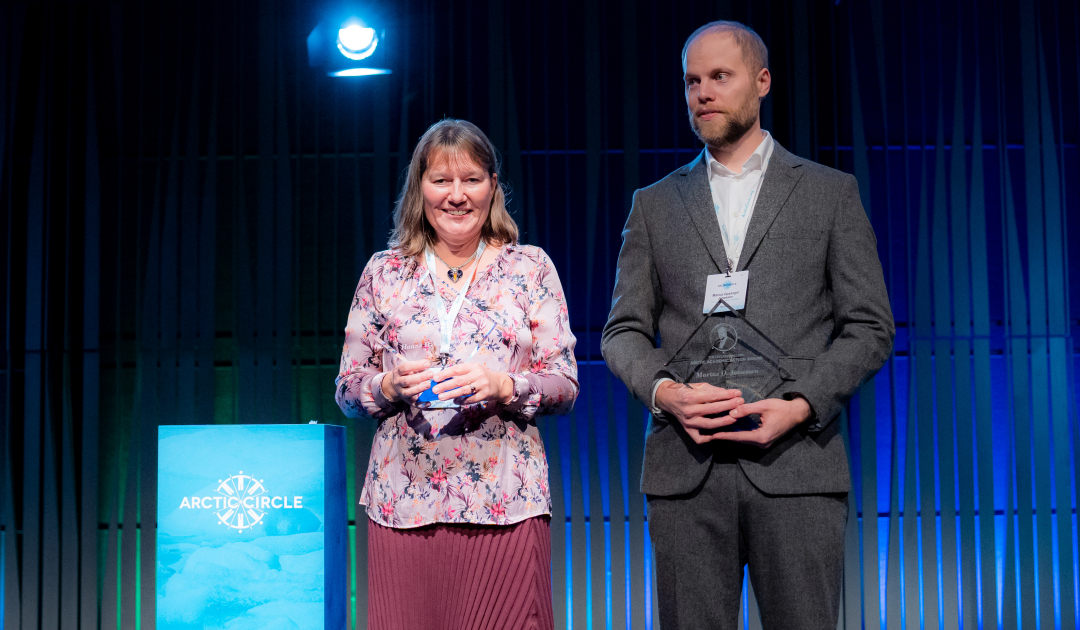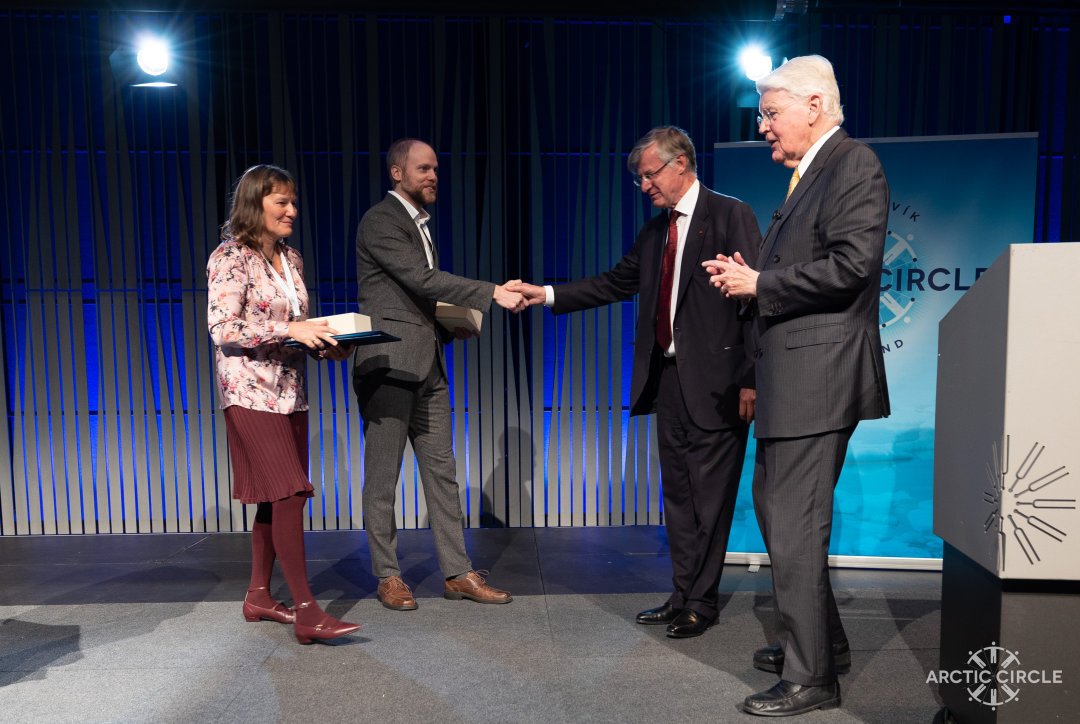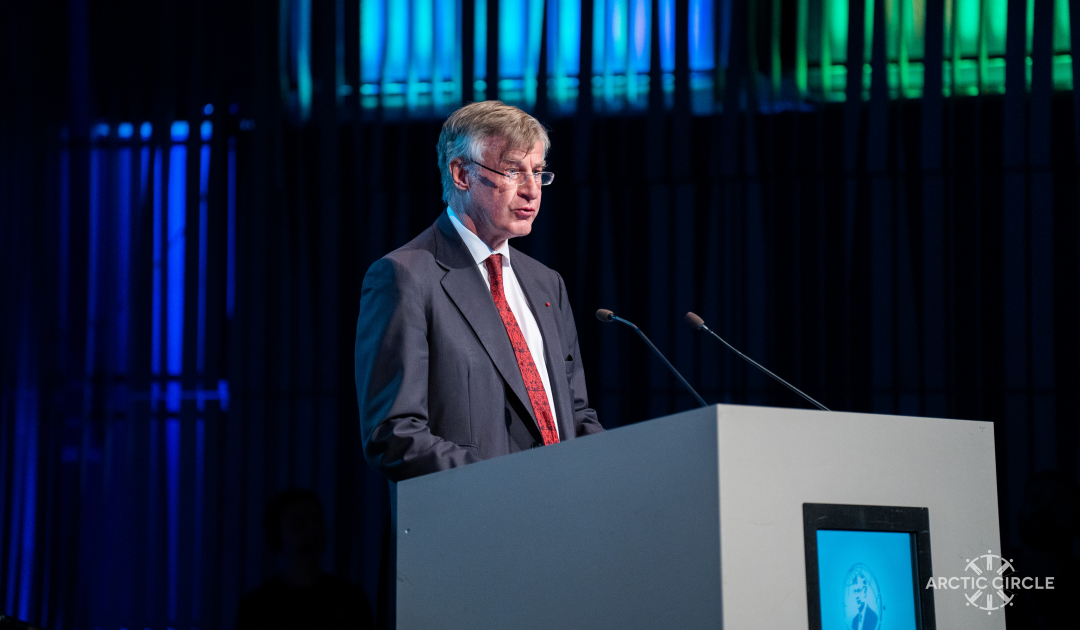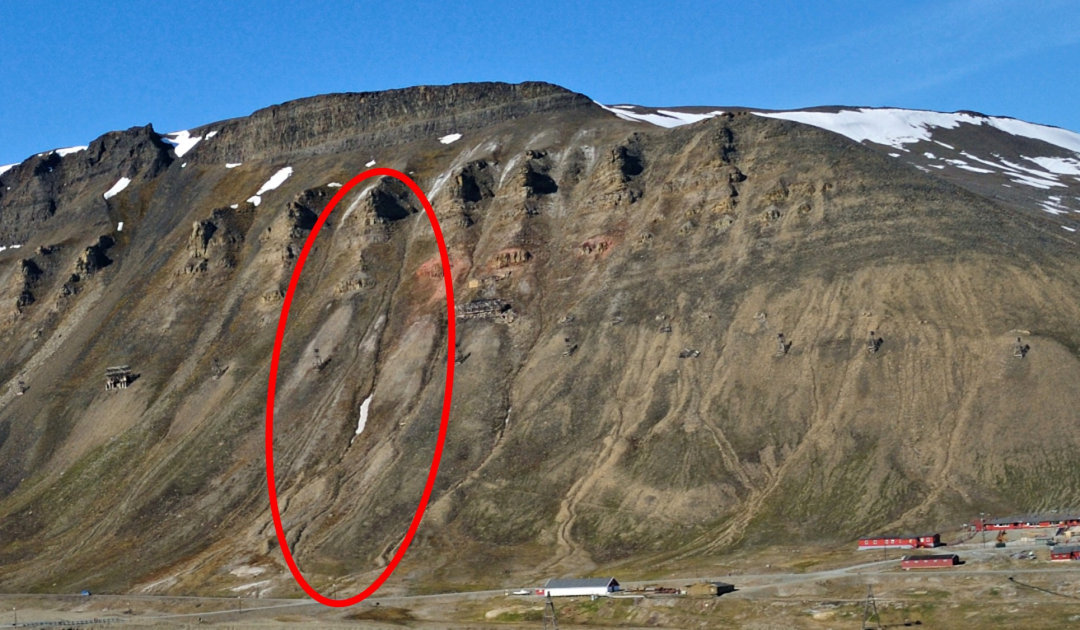
On the evening of 14 October 2016, a storm dumped 20mm of rain on the hillsides outside the town of Longyearbyen, Svalbard. The storm came after an unseasonably warm, wet autumn and resulted in the worst landslide there in over 40 years. No-one was injured in the incident that saw 5,000 cubic metres of sediment carried down the mountainside and deposited on a main road. But, with a warmer, wetter climate of the sort that set up the conditions for the landslide forecasted for the region’s future, it may only be a matter of time before another landslide in happens Svalbard or elsewhere in the region, this time with more serious consequences. In order to recognise the potential danger this has for people in the region, a project that is looking into how such events can be predicted has been awarded the second annual Frederik Paulsen Arctic Academic Action Award.
Drs Marius Jonassen and Hanne Christiansen, of the University Centre in Svalbard (Unis), were presented with the award, which includes an €100,000 grant for further research, during the 2022 Arctic Circle conference, which concluded in Reykjavík on Saturday, for their PermaMeteoCommunity project focusing on building a real-time response system that connects direct observations from boreholes and small-scale meteorological stations to an on-line platform that receives and displays all the data in near real time.


In presenting the award, Frederik Paulsen, who established it as a way to provide recognition for innovative ideas that transform knowledge into action to help address the impacts of climate change in the Arctic, explained that it had been selected by a panel of experts due to its potential to apply its findings to other parts of the region.
“I am pleased to support this project. It has a clear objective in advancing climate change research and mitigation, and it is also beneficial to the local community through concrete action and collaboration with them. This is highly important in creating real impact,” Mr Paulsen said.


In the past, the rain and temperatures that cause such situations were, according to Dr Jonassen, unusual. Today, they are seen on a regular basis, and may one day become normal (by 2050, if worst-case scenarios hold, Svalbard will see temperatures rise by 7C). In a future in which landslides are more likely, the research he and Dr Christiansen are conducting together with others from Unis could serve as the basis for the monitoring systems that would give local authorities warning that conditions are ripe for a landslide and then, when rain begins to fall, where one is due to take place. The ultimate benefit of such a system would be to save lives, but it would also avoid unnecessarily evacuating people that, it turns out, were not in harm’s way, as has occasionally happened.
“It is extremely important that what we are developing here for (Longyearbyen) with respect to handling the effects of climate change on permafrost and its potentially hazardous impacts on society, is recognised as an important action,” Dr Jonassen said.
In addition to being used to guide decision-making in advance of landslides, the system, Drs Jonassen and Christiansen believe, will help local authorities design local infrastructure and make decisions about where to build.
“Longyearbyen is an excellent test site for developing such forward-looking technology to provide safer and better living conditions for the inhabitants,” Dr Christiansen said.
Kevin McGwin, PolarJournal
Featured image: Award-winners Christiansen and Jonassen with Arctic Circle Chairman, (C) Arctic Circle
More on the subject





